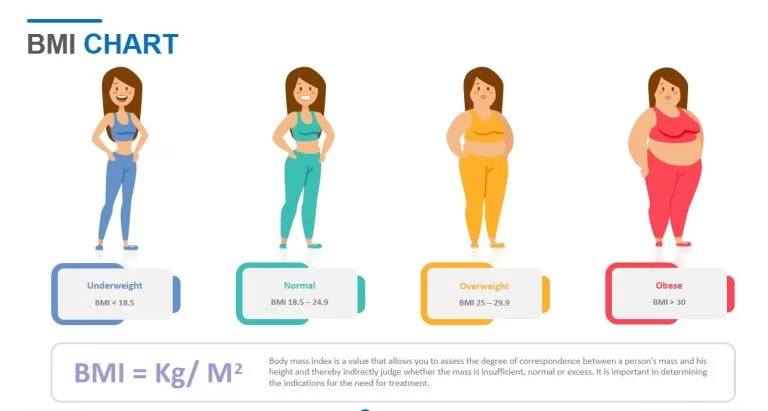
BMI Calculator
Body Mass Index


Body mass index (BMI) is a tool that is often used to measure our health and well-being. Our weight is in a safe range for our height if this number is positive. We'll talk about what BMI is and how to use it well in this blog post.
BMI is a number that is found by adding up a person's height and weight. It gives a rough idea of a person's body fat percentage and helps figure out whether they are underweight, average weight, overweight, or obese. BMI is a good way to find out about possible health risks linked to weight problems, but it shouldn't be used as a full picture of a person's health.
To find your BMI in uk, just split your weight (in kilogrammes) by your height (in meters squared). There are, however, a lot of BMI calculators online that can do this calculation for you instantly. You only need to know how much you weigh and how tall you are.
Once you have your BMI, the next step is to figure out what it all means. Most of the time, the following groups are used to group BMI ranges:
It's important to know that BMI has limits, even though it can give you useful information. The body mass index (BMI) doesn't take into account things like muscle mass, bone structure, age, or gender. So, even though they are fit and healthy, people with more muscle mass, like players, may have a higher BMI.
If you want to calculate your BMI, you have to find out your weight and height first. Once you know these values, you can arrive at the result by following the two steps mentioned below:
The equations for calculating the BMI are as follows:
BMI = weight (kg) ÷ (height (m))2
Example:
For a 177 cm (1.77 m) individual weighing 75 kg,
BMI = 75 / (1.77 * 1.77) = 75/ 3.13 = 23.96
BMI = weight (lb) ÷ (height (inches)) 2 × 703
Example:
For a 160-pound, 5’8” (68”) individual weighing 75 kg,
BMI = (160/ 68*68) * 703 = (160/4624) * 703 = 24.3
For adults over the age of 20 years, BMI values are grouped into the following weight status categories 1:
| BMI | Weight status |
|---|---|
| Below 18.5 | Underweight |
| 18.5–24.9 | Normal weight |
| 25–29.9 | Overweight |
| 30–35 | Obese |
| Over 35 | Morbid obesity |
The range remains the same for males and females. There is no separate BMI calculator for men and women.
Find everything you need for weight loss success on our website! Stay informed and inspired with our easy-to-read blog, full of tips, and expert advice. Stay in the loop with the latest trends and research. visit our blogs for more updates and start your journey to a healthier you today!
Know what its limits are: Keep in mind that BMI is just a guess and not a perfect way to check your health. It's just one way to figure out your weight situation.
Combine with other indicators: To get a fuller picture of your health, add other tests, like a waist circumference, body composition analysis, or an overall health review.
Get help from a professional: Talk to health experts, like doctors, nutritionists, or personal trainers. They can help you understand your BMI and other relevant factors and give you advice that is tailored to your needs.
The body mass index (BMI) is a simple tool that uses your height and weight to estimate your body fat. It can help you figure out the health risks that come with your weight, but it's important to know that it has some flaws. By knowing how BMI works to measure weight and health and using it along with other tools, we can get a fuller picture of our overall health. Remember to get personalised information and help from medical professionals on how to reach and stay at a healthy weight.